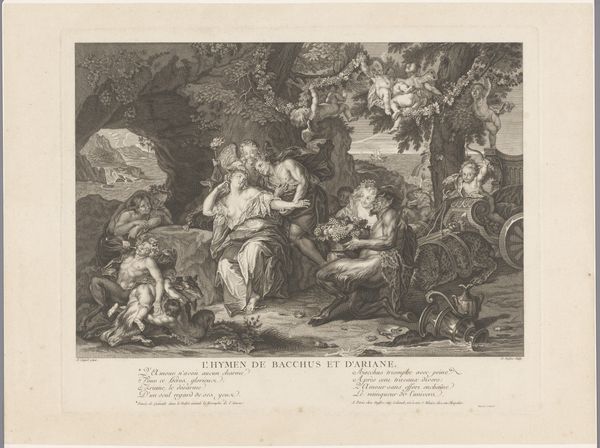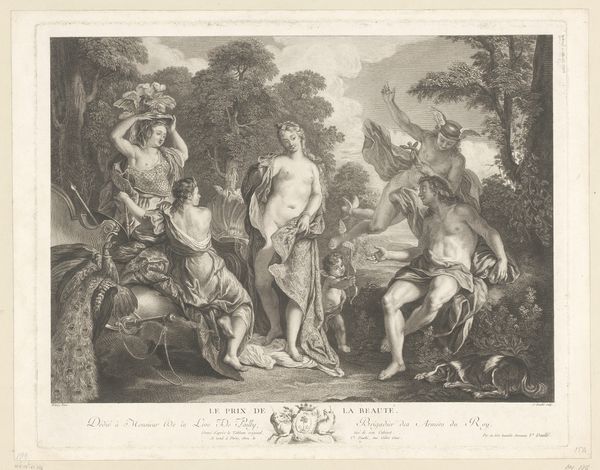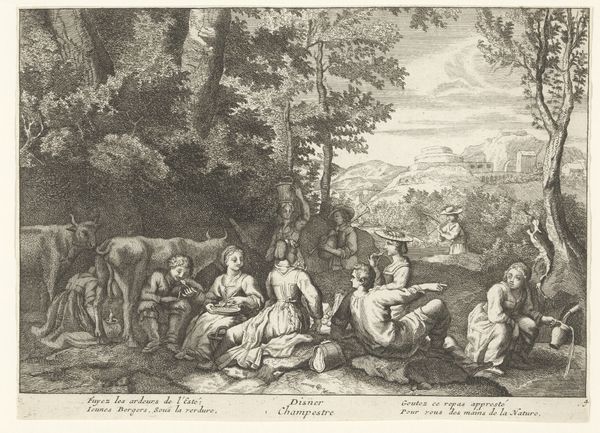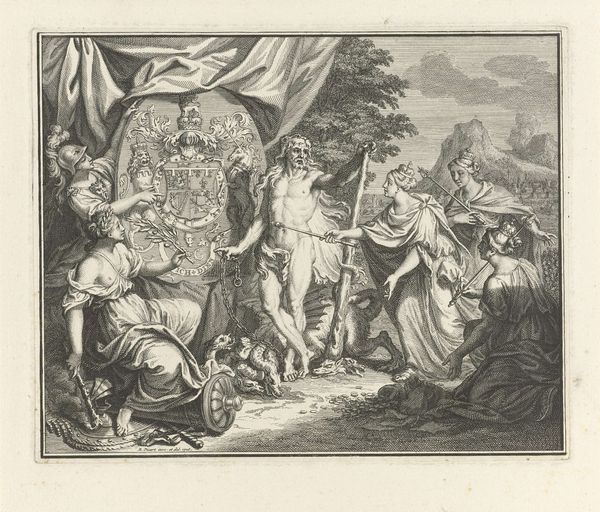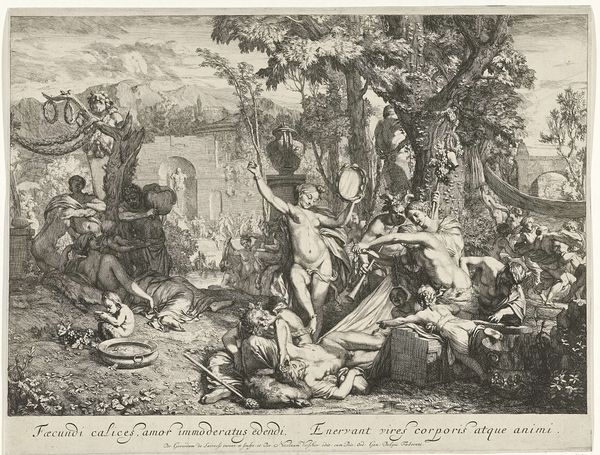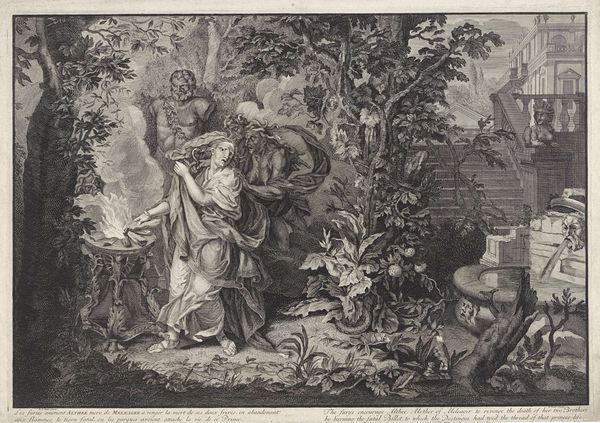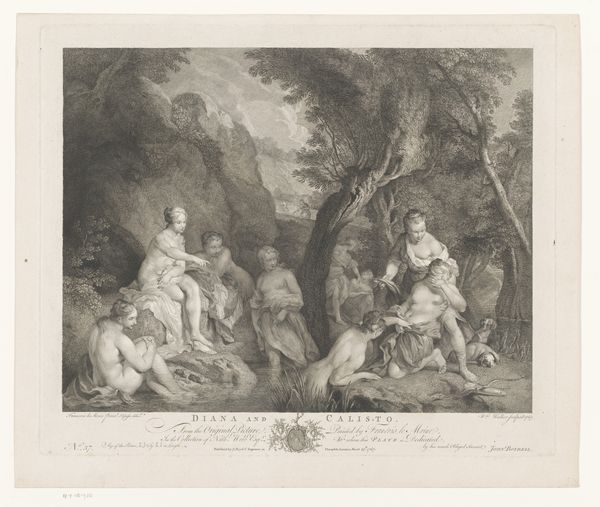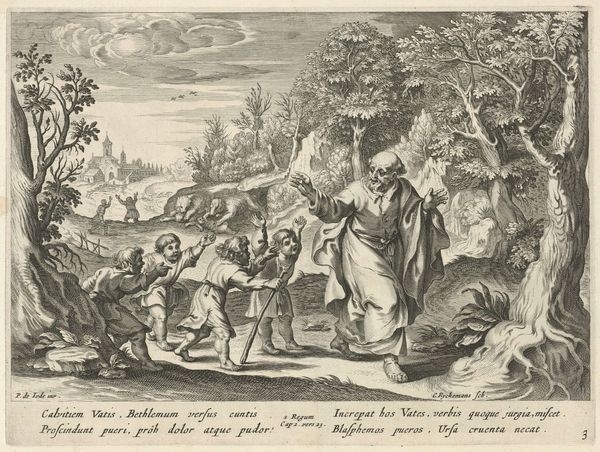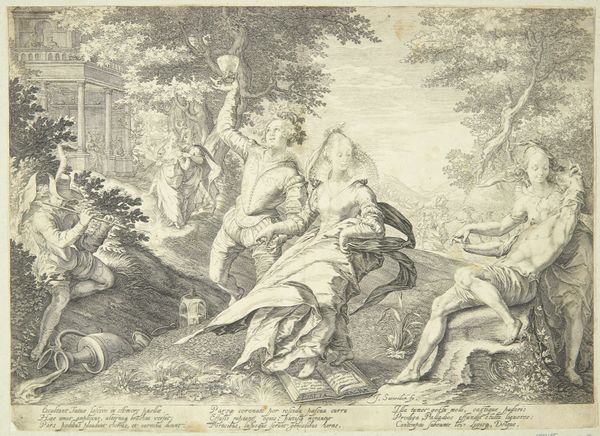
engraving
#
allegory
#
baroque
#
old engraving style
#
landscape
#
figuration
#
history-painting
#
engraving
Dimensions: height 470 mm, width 572 mm
Copyright: Rijks Museum: Open Domain
Pieter van den Berge created this engraving, Bacchus and Ariadne, in the Netherlands, sometime between the late 17th and early 18th centuries. In it, we see the god Bacchus encountering Ariadne, abandoned on the island of Naxos. The image derives its meaning from classical mythology, a foundational source for European art academies and courtly culture at the time. The picture embodies a humanist ideal – an interest in earthly love and pleasure combined with the formal restraint and learning fostered by elite institutions. Bacchus, god of wine, represents the uninhibited life of the body and the passions. His encounter with Ariadne is both a rescue and the beginning of a love affair. This image naturalizes a certain kind of power dynamic between men and women, gods and mortals. To understand this print fully, one would want to research not only the classical sources of the story but also the history of the art market in the Netherlands. Who bought such images, and how did they use them?
Comments
No comments
Be the first to comment and join the conversation on the ultimate creative platform.
